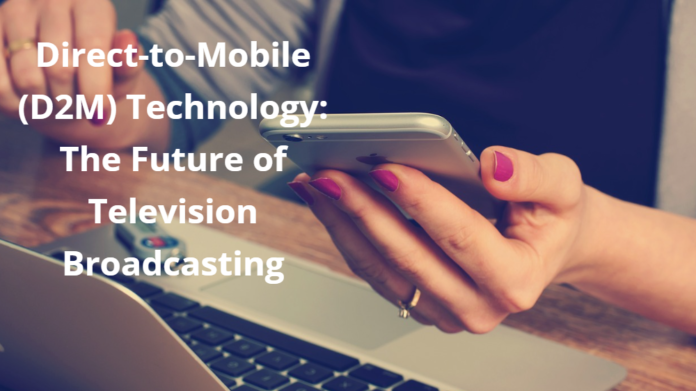With Direct-to-Mobile (D2M) technology on the horizon, the line between the living room and the world may soon blur, turning every mobile device into a personal gateway to entertainment and information. In this new era, the power of television could truly be in the palm of your hand
In an era defined by rapid technological advancements, the government is keenly investigating the potential of revolutionizing the way people consume television content. The concept of beaming TV channels directly to mobile phones, without the need for a data connection, is being explored. Termed Direct-to-Mobile (D2M), this new technology aims to provide mobile phone users with the ability to watch TV in a manner similar to traditional cable or Direct-to-Home (DTH) connections.
What is D2M?
Direct-to-Mobile (D2M) is a groundbreaking innovation that could redefine how consumers access television content. Unlike streaming through a data connection, D2M proposes a method to transmit live television channels directly to mobile devices. This technology builds on the principles of DTH services, extending them to create a more personalized and portable television experience.
Collaborative Effort
The Department of Telecommunications (DoT), the Ministry of Information and Broadcasting (MIB), and IIT-Kanpur are at the forefront of this technological exploration. Government officials, along with leading researchers and scientists, are meticulously working on the details of this ambitious project.
Benefits and Potential Impact
1. Accessibility: D2M could bridge the gap between urban and rural areas in terms of access to entertainment and information. This technology would potentially enable anyone with a mobile device to access television channels, breaking down traditional barriers related to geographical location or economic status.
2. Cost-Efficiency: By eliminating the need for a data connection to access television content, D2M may provide a more cost-effective option for consumers. This is particularly significant in areas where data costs are high or network connectivity is unreliable.
3. Integration with Existing Infrastructure: The synergy between DTH and D2M technologies may allow for more seamless integration with existing broadcast infrastructure. This could expedite the rollout of D2M services, without the need for extensive new investments.
4. Enhanced Consumer Experience: With the convenience of watching live television on a mobile device, users would no longer be confined to a specific location. Whether on a commute, at work, or in a remote area, viewers can stay connected to their favorite channels.
Challenges and Considerations
While the prospects are exciting, the implementation of D2M technology presents several challenges:
– Technical Complexity: Developing a system that can reliably beam live TV channels to mobile devices without data connections requires overcoming significant technical hurdles.
– Regulatory Compliance: Ensuring that this technology aligns with existing laws and regulations is essential. This includes considerations related to licensing, content regulation, and user privacy.
– Security Concerns: Protecting the integrity and security of the transmitted content will be crucial, requiring robust cybersecurity measures.
Conclusion
Direct-to-Mobile (D2M) technology represents a bold step toward a more inclusive and dynamic media landscape. By aligning technological innovation with social inclusion, D2M has the potential to transform how television content is accessed and consumed.
The collaborative effort between government departments and academic institutions like IIT-Kanpur underscores the seriousness with which this project is being pursued. While the road ahead may be fraught with challenges, the potential rewards are compelling.
As the world continues to evolve towards a more interconnected and mobile-centric environment, D2M could become a pivotal part of the television viewing experience, reflecting the changing needs and lifestyles of the modern consumer. Its success will hinge on careful planning, collaboration, and a commitment to overcoming the technical, regulatory, and security obstacles that lie ahead.




